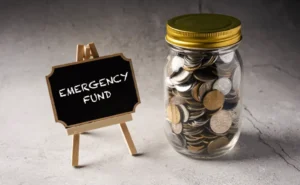As a dedicated educator, creating a thriving learning environment for your students is paramount. However, the costs associated with classroom supplies can strain your budget. Thankfully, there are various ways to cut down on these expenses without compromising the quality of education. In this blog post, we’ll explore practical strategies to help you reduce classroom supply costs and maximize your resources.
Table of Contents
Evaluate Classroom Needs

Identify Essential Supplies: Assess the most critical supplies for effective teaching and learning. Prioritize essentials over non-essential items to optimize your spending.
Reuse and Repurpose Materials: Encourage a recycling culture in your classroom. Reuse and repurpose items like paper, cardboard, and containers to minimize waste and save money.
Tap into Donations and Grants

Seek Support from Local Businesses: Contact local businesses and organizations for potential donations or sponsorships. Many companies are willing to support education in their communities.
Apply for Educational Grants: Research available educational grants and apply for those aligned with your classroom needs. Grants can provide funding for specific projects and materials.
Bulk Buying and Group Purchases

Partner with Colleagues for Discounts: Collaborate with fellow teachers to buy supplies in bulk. Purchasing as a group can often lead to discounts from suppliers.
Explore Wholesale Suppliers: Investigate wholesale suppliers for better deals on classroom essentials. Buying in bulk can lead to significant cost savings over time.
Utilize Online Resources

Access Free Printable Materials: Numerous websites offer free printable teaching materials, worksheets, and resources. Use these resources to supplement your classroom supplies.
Exploit Open Educational Resources (OER): OER platforms provide free access to high-quality educational materials and textbooks. Incorporate these resources into your lesson plans to reduce printing costs.
DIY Classroom Supplies

Create Your Teaching Aids: Get creative and design your teaching aids using inexpensive materials. Crafting your visual aids can be a fun and cost-effective approach.
Engage Students in Craft Activities: Involve your students in creating classroom decorations and displays. This not only fosters creativity but also reduces the need for store-bought decorations.
Engage Parents and the Community

Host Supply Drives: Organize supply drives or fundraisers to gather classroom materials. Engaging parents and the community in these efforts can yield substantial support.
Collaborate with Parent Volunteers: Encourage parent volunteers to assist with classroom organization and supplies. Their involvement can lighten the workload and reduce costs.
Implement Sustainable Practices

Introduce Green Initiatives: Embrace eco-friendly practices in your classroom. Encourage double-sided printing, recycling, and using eco-conscious materials.
Encourage Digital Learning: Incorporate digital resources and platforms into your teaching. Digital materials save paper and printing costs while adding an interactive dimension to learning.
Budgeting and Prioritization: Develop a Classroom Supply Budget: Set a clear budget for classroom supplies and stick to it. Regularly review and adjust the budget as needed.
Prioritize Essential Supplies: Determine which supplies are essential for student learning and prioritize purchasing. Non-essential items can be acquired as funds allow.
By employing these practical strategies, teachers can significantly cut classroom supply costs without compromising the quality of education. Embrace creative solutions, tap into available resources, and involve the community to optimize your classroom spending and create a dynamic and nurturing learning environment for your students.





